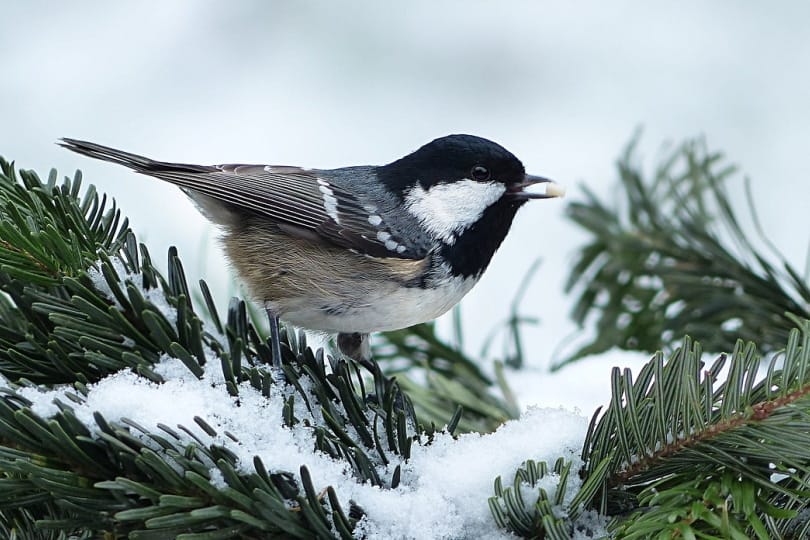When winter comes and the snow starts falling, many birds look for shelter where they’ll be protected from the rough weather conditions. Of course, some birds migrate to warmer climates, but the ones staying in their regular habitat need to adjust to the winter circumstances.
Bad weather and snow bring a lot of difficulties to birds, but they still manage to survive through that period. Keep reading if you’d like to know how birds survive through everything that happens during winter.
Click to Skip Ahead:

How do birds survive snowstorms?
Birds have to be well prepared and ready for the harsh weather conditions to survive a snowstorm. You’ve probably wondered how birds prepare for such changes? Here are the most common things birds do to adapt to snowstorms and winter weather.
Beefing up
Birds that are heavy and well-fed have much better chances of surviving a snowstorm than birds on the skinny side. They need to stock up on their fat reserves to endure harsh winter circumstances.Otherwise, they may starve to death.

Seeking the proper location
To prepare for snowstorms, birds seek shelter and find a suitable location to hide from the snow. Some birds are ready to travel for several miles to find the perfect shelter. Since birds can sense weather changes, they have enough time to find a safe place where they can be warm.
Adapting
With so many changes in the world, birds have also adapted and evolved to endure harsh weather. They have slim legs and small feet, and their circulation is counter-current. The birds’ blood is cold on their feet, which helps them lose very little heat when standing. Their feathers are waterproof and have air pockets that allow them to trap air inside and stay warmer.

Where do birds go when it snows?
When it snows, birds will seek adequate shelter, even if they have to travel a couple of miles to find it. The shelter should be warm, away from predators, and provide access to food. Below are some of the most common hiding spots for birds during the snow.
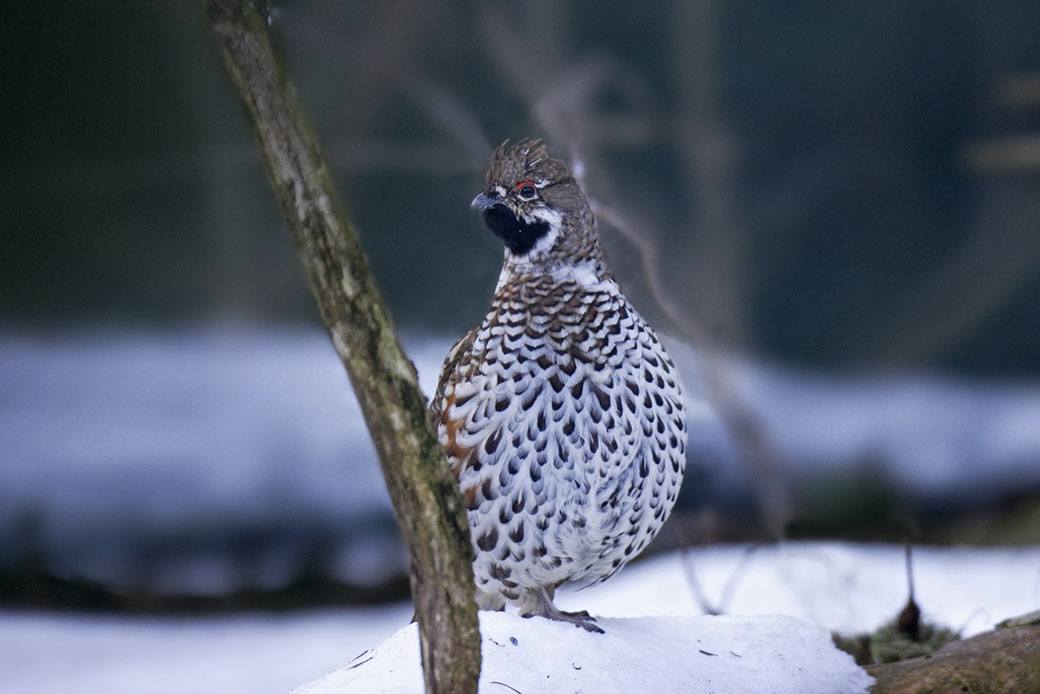
Bushes and trees
During winter and snow, birds will likely seek shelter in bushes and trees. The best options are evergreen trees and bushes, as they have foliage that will prevent wind and snow from reaching the birds. Bushes and trees are also commonly filled with insects, so birds will have a nearby food source, which is extremely important during wintertime.
Tree cavities
Tree cavities are also an excellent hiding spot for birds during the snow. Many birds that commonly nest in cavities will also seek shelter in them throughout the winter. Swallows, bluebirds, woodpeckers, and other cavity-nesting birds will look for crevices in trees to wait until the snow stops.
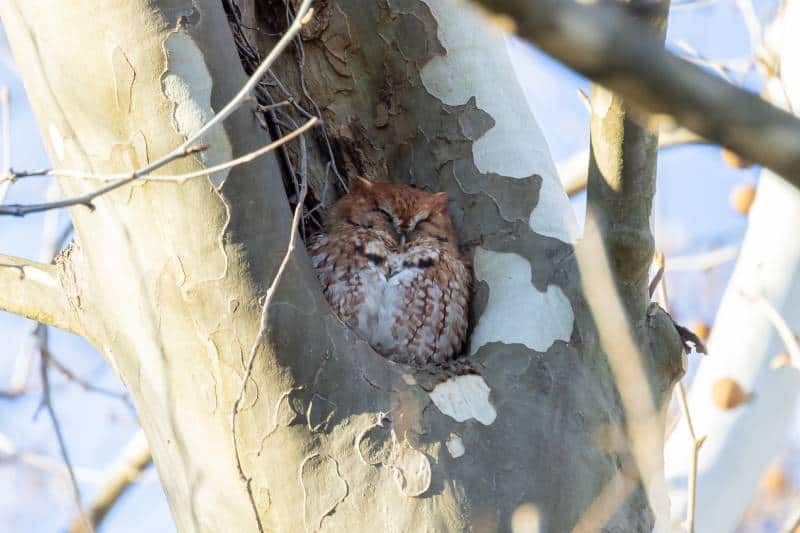
Birdhouses
Many songbirds go to birdhouses in people’s backyards to hide from the snow. You’ll probably notice wrens, chickadees, sparrows, and other small songbirds snuggling together in the birdhouse to be away from the snow and keep their body temperature up.
Warmer climates
During bad weather, some bird species will migrate to warmer climates to wait until winter is over. Migration is one of the best tactics because birds won’t have to think about lack of food or keeping their body temperature high. Instead, they will continue their routine somewhere warm until it’s time to return home.

How do birds stay warm during winter?
As said, birds have evolved to survive through harsh winter circumstances, and there are various things they do to stay warm, including:
- Puffing their feathers
- Changing their posture
- Cuddling and roosting
- Tucking their feet and bill
- Shivering
- Soaking up the sun
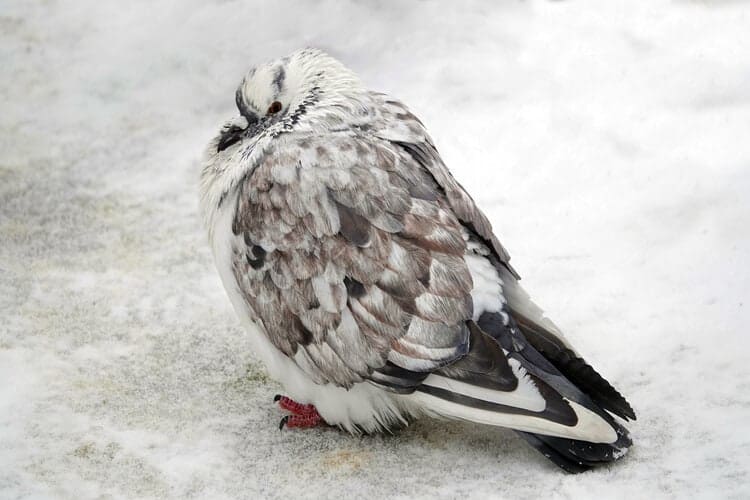
Puffing their feathers
Insulation is very important for staying warm in the winter, so many birds will puff up their feathers to stay warm. To be even warmer, birds will regularly preen their feathers to make them cleaner and more flexible since that will allow them to trap more heat.
Changing their posture
Birds will often change their posture to be warmer in winter. When they do this, they will stand upright, withdraw their heads and point their bills toward the snow. This type of posture allows heat retention so that the cold doesn’t have such a big impact on them.

Cuddling and roosting
Many bird species like to cuddle together in small spaces and therefore be warmer when it’s cold outside. They will also slow down their metabolism to preserve as much energy as possible. This tactic is also an excellent safety method, as predators will likely stay away from many birds in one place.
Tucking their feet and bill
Birds will frequently stand on one foot while tucking the other one in their feathers. They can also tuck in their bill to the shoulder feathers for maintaining body heat. This behavior is especially common in ducks, pelicans, and geese, although many other bird breeds do this.

Shivering
When shivering, birds raise their metabolic rate, so shivering is a good—although short-term—solution for staying warm. Shivering consumes more calories, so birds only do this in extreme conditions when they need to keep warm for a short period.
Soaking up the sun
Whenever there are sunny days in winter, birds will use the opportunity to soak up the sun. They commonly turn their backs toward the sun and raise their feathers which allows them to trap heat inside. Sometimes, they’ll even spread their wings to heat more parts of their bodies and get warmer.

How can I help birds during winter?
There are ways you can help birds during winter so that birds will have easier access to all their necessities. Providing shelter and food is not hard, but it will have a significant impact on birds, and it will help them tremendously on hard winter days.
Check out some simple things you can do to help birds out until it’s warm outside again.

Provide shelter
Since birds need a shelter where they can wait until there’s no more snow, you can put up birdhouses or box nests to accommodate different bird breeds. It’s best to learn more about birds nearby to provide adequate shelter. Many bird species like to snuggle when it’s cold outside, so the shelter should be big enough to accommodate multiple birds but not allow access for predators.
Provide water and food
Water and food can be hard to find during winter, so why not provide them in your backyard? A heated birdbath would be the perfect addition of warm water for birds, although you should prevent them from bathing inside. When it comes to food, it’s best to provide high-energy foods because birds need a lot of calories to stay warm. Peanut butter, mealworms, suet, and black oil sunflower seeds are some of the best food options to give birds during winter.
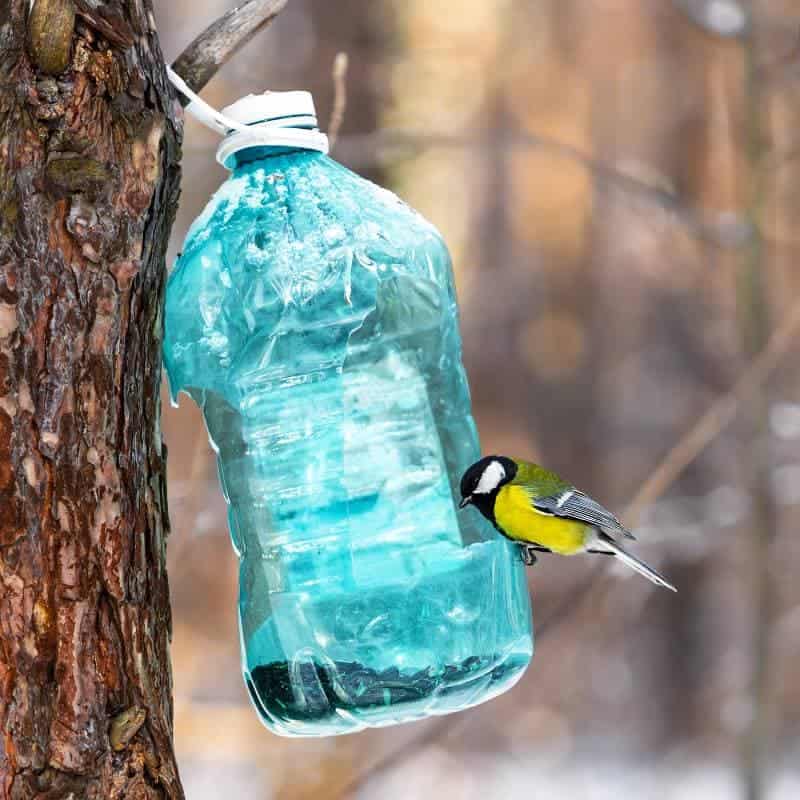
Set up feeders
Feeders are a great way to ensure birds have enough food to cope with bad weather. It’s best to set them up early so that the birds will know the location even before winter. Also, if possible, refill them every night to ensure enough food for all birds that might come to your backyard. Since not all birds use regular feeders, you can also set up ground feeders.
Plant
Planting many plants such as evergreen trees and bushes will be a great way to help birds survive winter. Dense hedges or hollies would be the perfect addition to your garden because they will look beautiful and provide cover to birds at the same time. You can also plant edible berries which can be a great food source when winter becomes rough and food is hard to find.

Conclusion
So, as you can see, birds have great methods for staying warm during winter. They can survive a snowstorm easily if they have proper shelter and enough food. There are great shelter options in nature. Still, you can also help them survive snowstorms and cold weather by creating a peaceful, bird-friendly environment in your backyard where they can hide until the weather becomes warmer.
Featured Image Credit: Oldiefan, Pixabay
